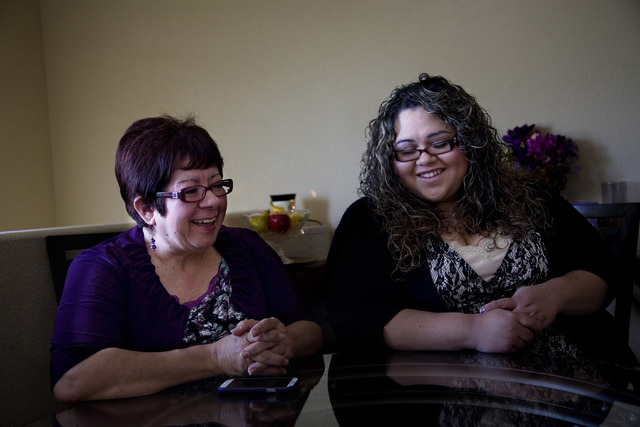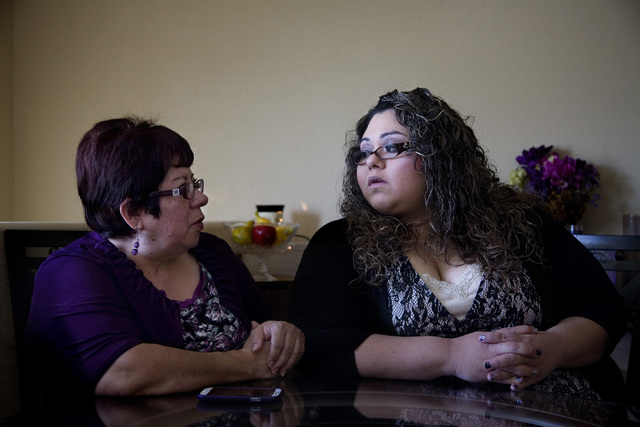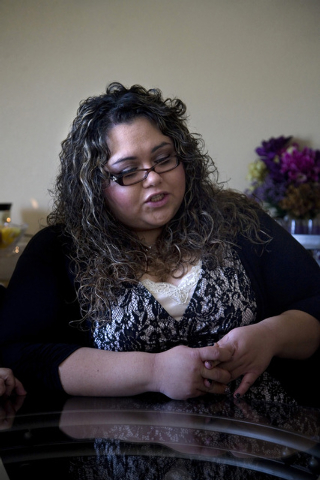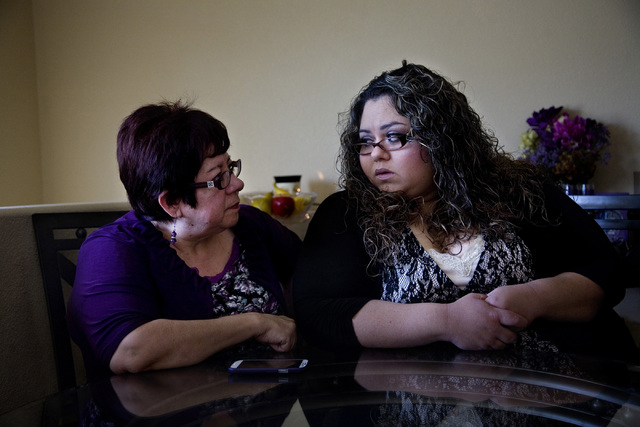Immigrant mother to family: Get involved in your children’s education
Deborah Trejo pushes her eight immigrant siblings to get involved with their children’s education, the way she did with her own daughter.
But it’s not easy for immigrant parents to do that if they don’t speak English, she said, urging parents to at least try.
“If you don’t get involved, you lose opportunities,” the 57-year-old single mother said. Trejo moved to this country from Mexico City in 1984 and is now a U.S. citizen.
The younger generation of Trejo’s family is part of a growing U.S. demographic of children who are born in other countries or who are being raised by an immigrant parent. In 2012, there were 57,000 such children living in the city of Las Vegas, according to the latest numbers available from the Kids Count data center, a project of the Annie E. Casey Foundation based in Baltimore. That represented 40 percent of the 142,000 Las Vegas children under the age of 18.
When you talk about that demographic, you are mostly talking about Hispanic children, said Christie Batson, an associate professor at UNLV. Batson is a sociologist who studies immigration adaptation.
Children of immigrants are the fastest-growing segment of the Latino electorate, according to a study released Thursday by the Center for American Progress, a nonpartisan educational institute based in Washington, D.C.
But these children are more likely to live in poverty, forgo needed medical care, have parents who are not educated, drop out of high school and experience behavioral problems, Batson said. And their parents tend not to participate in their education.
“On most social indicators, children with immigrant parents fare worse than their native-born counterparts,” she said.
However, a phenomenon noted by sociologists, which they often refer to as the “Mexican paradox,” shows that those children also tend to have stronger family units compared to their peers in other ethnic groups.
“They are also most likely to live in two-parent households, in a more family-stable environment,” she said. “Oftentimes, the Hispanic living arrangements produce, like a protective barrier, to sort of counterbalance some of the negative outcomes that they might experience.”
Mirzah Trejo, 29, didn’t have that living arrangement and grew up in a single-parent home.
Her options were dropping out of high school, ending up pregnant or in jail, she said.
But she had a mother who knew that education was critical.
“She never told me I couldn’t,” said Mirzah Trejo, who learned English in school.
The most critical indicator of success for immigrant children is English language proficiency, Batson said. But because many immigrant children are more likely to live in poverty, they are less likely to attend early childhood education.
“If they have a language barrier in kindergarten, they are not going to get the most out of their kindergarten year because they are going to be trying to learn the language,” Batson said. “These children are starting kindergarten at a disadvantage compared to all their peers.”
Last year, Gov. Brian Sandoval signed a bill into law to provide $50 million to Nevada schools over the next two years to improve the academic performance of English language learners. But those funds will only benefit students at 14 out of the 217 elementary schools in Clark County.
“We know what needs to be done and we’ve been doing it,” said Christine Clark, a UNLV professor and senior scholar in multicultural education. “We just haven’t done it in a systematic way.”
Policymakers need to focus on bilingual education programs, said Clark, noting that someone’s illiteracy in their first language is a barrier to mastering English.
Another obstacle immigrant children face is the attitude of others, such as teachers who underestimate them or assume they don’t want to learn, Clark said.
“Understanding that these kids can rise to the occasion” is important, she said.
Mirzah Trejo demonstrated her ability to succeed last month. The oldest of 15 cousins in the family, she graduated from the University of Nevada, Las Vegas with a bachelor’s degree in sociology. She hopes her younger cousins will follow in her footsteps.
“We made sacrifices,” Deborah Trejo said.
Mirzah Trejo had to take a break from college to work full time and contribute to supporting her family because her mother was only working part-time at the Rio.
It’s typical for children of immigrant parents to contribute to the household, Batson said.
From 2006 to 2011, the number of children up to age 17 who had at least one immigrant parent grew from 15.7 million to 17.2 million, according to a brief published in May by the Washington, D.C.-based Urban Institute, which focuses on social and economic issues. They accounted for almost one-quarter of all children in the country.
Contact Yesenia Amaro at yamaro@reviewjournal.com or 702-383-0440. Find her on Twitter: @YeseniaAmaro.





















